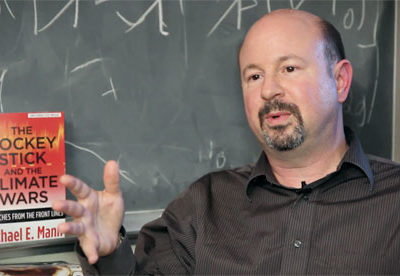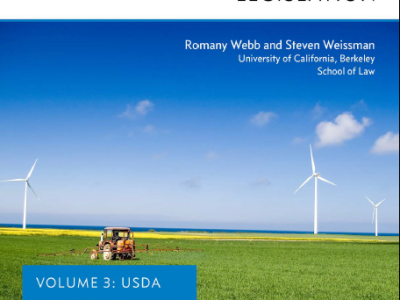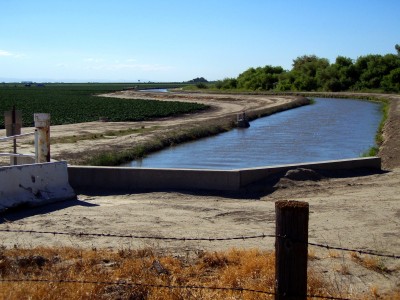Climate Change
Integrating Climate Mitigation and Adaptation, or: I’m in BIG Trouble
Don’t Try This At Home
A couple of weeks ago, I noted in a discussion of water and climate change, that in many cases, seeking to adapt to climate change effects might actually wind up undermining efforts to mitigate it. My example was lining irrigation canals, but there are lots of them out there. I began to think “Gosh. There …
Continue reading “Integrating Climate Mitigation and Adaptation, or: I’m in BIG Trouble”
CONTINUE READINGThe Emergence of Climate Law Courses
It’s an increasingly widespread law school course.
The U.S. legal system has only begun to address climate change in the past ten or fifteen years. It was inevitable that this subject would infiltrate basic environmental law courses, especially given that there have now been three Supreme Court cases on the subject. But climate change is now increasingly the subject of separate courses …
Continue reading “The Emergence of Climate Law Courses”
CONTINUE READINGWhy Michael Mann’s Defamation Suit Against Climate Denialists Is the Right Move
With the facts on his side, there’s no reason to hide
Dr. Michael Mann, one of the country’s leading climate scientists, has been harassed, threatened, and berated for his views that human actions are contributing to global climate change. But not just from anonymous commenters on websites — from leading publications like the National Review Online. After being compared to Jerry Sandusky and having the credibility …
Continue reading “Why Michael Mann’s Defamation Suit Against Climate Denialists Is the Right Move”
CONTINUE READINGU.S. Agricultural Policy, Climate Change, and Existing Legal Authority
New research from Berkeley Law finds that the U.S. Department of Agriculture can act now to reduce greenhouse gas emissions
The U.S. Department of Agriculture (USDA) is much in the news these days, as it implements the massive and always-controversial farm bill, works to improve access to national forests, strives to enhance the U.S. position in international agriculture markets, and wrestles to contain this season’s extensive wildfire activity. What is less obvious to many is …
Continue reading “U.S. Agricultural Policy, Climate Change, and Existing Legal Authority”
CONTINUE READINGWater and Climate Change, Backwards
Will Conserving Water Contribute to Global Warming?
All of us (except Republicans and adherents of Movement Conservatism) know that climate change is dangerous for rising temperatures, but also because of its effects on other natural resources. Most significantly, it is hardly news that increasing and variable temperatures will reduce, for example, the Sierra snow pack and cause greater evaporation, eventually leading to …
Continue reading “Water and Climate Change, Backwards”
CONTINUE READINGHydrogen “Fool” Cells Vs. Electric Vehicles
The debate over the best clean vehicle technology
California recently committed to spending $50 million on 28 public hydrogen fuel cell charging stations, throwing gasoline (bad pun) on the fire of a growing debate: electric vehicles vs, hydrogen fuel cells as the carbon-free vehicle technology of the future. California policy makers seem to think it may be both, based on their spending to …
Continue reading “Hydrogen “Fool” Cells Vs. Electric Vehicles”
CONTINUE READINGBack in the Fast Lane
New Pritzker Brief from UCLA Law on Making Public Transit Work
Fellow blogger Ethan Elkind has spent a lot of time researching the history, politics, and future of transit in California. Earlier this year he published Railtown, a fascinating portrait of the fight over development of the L.A. Metro rail system, revealing the degree to which that development has been driven by good old-fashioned politics and even intrigue …
Continue reading “Back in the Fast Lane”
CONTINUE READINGMining for Votes In Coal States: Paul Ryan On Climate Change
Whatever you think of his budget proposals, his climate views are irresponsible.
For years, Paul Krugman has been decrying Paul Ryan’s reputation as a reputable analyst of budget issues. That’s not my area of expertise, and I’m agnostic on that issue. But Ryan’s views about climate change don’t bespeak serious thought about the issues. The Christian Science Monitor reports that last Ryan spoke about climate change in …
Continue reading “Mining for Votes In Coal States: Paul Ryan On Climate Change”
CONTINUE READINGGuest Blogger John Nagle: The Clean Air Act Applies to Greenhouse Gases Because of What Congress Said, Not Because of What Congress Intended
A Reply to Megan Herzog
In my recent CNN op-ed and in her previous post, Megan Herzog and I agree that the Supreme Court has properly interpreted the Clean Air Act (CAA) to apply to the emission of greenhouse gases. We just disagree about the correct manner in which to reach that conclusion. Judges and scholars generally favor an originalist …
CONTINUE READINGClimate Change Adaptation Strategy: Can California Do More?
Is Increased Reliance on the Public Trust Doctrine an Essential Part of Effective State Adaptation Policy?
I often tell students in my Climate Change Law and Policy course that adaptation–that is, how we can best adapt to the unavoidable impacts of climate change–is the poor stepchild of the debate over greenhouse gas emissions and climate change. By that I mean that climate change mitigation (i.e., how to reduce greenhouse gas emissions) generates far more …
Continue reading “Climate Change Adaptation Strategy: Can California Do More?”
CONTINUE READING










